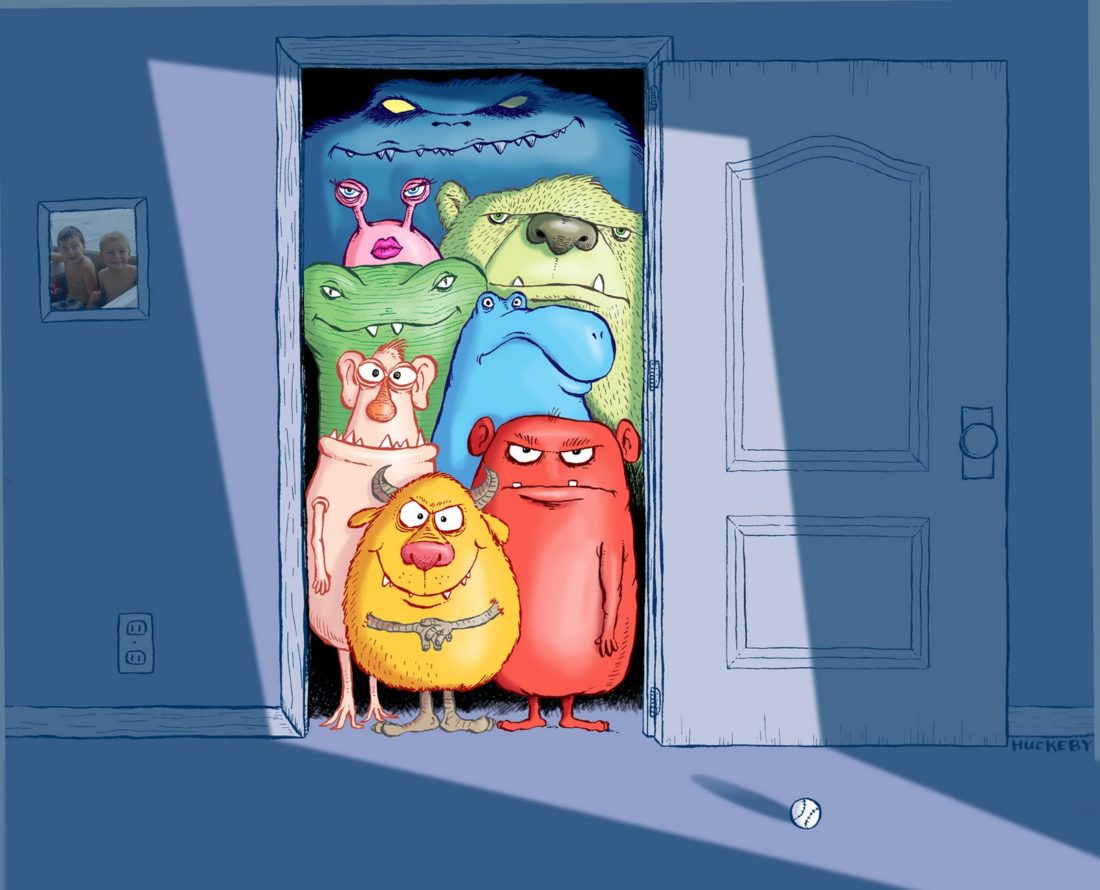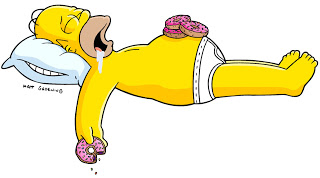
Why Cognitive Distortions Are the Monsters In Our Closets
So, I talk a lot about cognitive distortions (I know, shut up already!). I really would stop talking about them if they weren’t EVERYTHING.
I talk about how our negative core beliefs (how we see ourselves and the world) are shaped by these distorted, irrational, thoughts that come from us, not to us. In other words, we don’t see things as they are; we see things as we are. Our perceptions sometimes have very little to do with reality. The purpose of knowing and identifying these distortions is to learn to combat them like we did with the monsters we had in our closets growing up.
When we had a bad dream, and it was dark and ominous-feeling, we became frightened, believing that there was a monster in the closet. Note: It’s not as important that this particular fear applied to you, but that you understand the imaginary fears that children create.
My parents would come in, put me back to bed, and tell me the monster wasn’t real. I remember repeating over and over to myself…
Monster,
You are not real.
You are not real.
You are NOT real.
But, boy did it feel real—and so do our distorted thoughts. Once we have an understanding of these irrational thoughts that creep in like monsters, the ones that keep us stuck and make us operate from fear, we must look them square in the eyes, and say…
Distorted Thoughts,
YOU ARE NOT REAL.
I literally talk to myself in my head, or even out loud, when I’m becoming a prisoner of my stinking thinking. While it’s the bad dream that makes us fear the monsters as kids (as well as our inability to distinguish between magical thinking and reality), it’s the automatic, distorted cognitions that make us fear life as adults.
We can perceive fear and feel it in our cores, but that doesn’t mean it has to take us down.
So, how do we know what is based in reality and what isn’t, if it all feels real? The first thing is to notice the thoughts by looking at my list below of 10 Common Cognitive Distortions we can all fall prey to. I have touched on some in previous posts, and will eventually get to them all. I’d recommend printing out this list and keeping it visible in your home.
10 Common Cognitive Distortions
1. All or Nothing Thinking: you look at things in absolute, black and white categories. You go to extremes instead of thinking in shades of grey. Ex. “If I’m not the best, I have failed.” Things are seen as good or bad. See: Never Ever Say Never Ever
2. Overgeneralization: you view a negative event as a never-ending pattern of defeat. Ex. You don’t win in one instance, and that means that you aren’t a winner. You have a breakup, and that means you are destined to be alone.
3. Mental Filter: you dwell on the negatives and ignore the positives. Ex. You are given one piece of criticism within a sea of compliments, and the negative bit is the one you harp on.
4. Discounting the Positives: you insist that your accomplishments or positive qualities “don’t count.” It can be difficult to receive compliments.
5. Jumping to Conclusions:
(A) Mind-reading: you assume that people are reacting negatively to you when there is no definite evidence for this. You think you know what others are thinking about you. Ex. You think others are judging you, believing you to be strange, or awkward, or a loser.
(B) Fortune-telling: you arbitrarily predict that things will turn out badly, AKA future-tripping. Ex. You think you know you won’t get the job you want, or your partner is going to break your heart.
SEE: Be Your Own Scientist– how to stop jumping to conclusions
6. Magnification or Minimization: you blow things out of proportion or you shrink their importance inappropriately. Ex. Magnification– Your throat is sore, so you must have cancer. Minimization– You’ve won an award, and it’s “no big deal.”
7. Emotional Reasoning: you reason and rationalize from how you feel. Ex. You don’t feel like doing something, so you put it off. This can look like denial.
8. “Should Statements”: you criticize yourself or others with “should’s,” “shouldn’t’s,” “must’s,” “ought’s,” “have to’s,” etc.. These statements are based on the inaccurate viewpoints we have of others. Social media makes this difficult because we only see a snippet into the lives of others, and we compare without seeing the whole picture.
9. Labeling: you identify with your shortcomings. Instead of thinking, “I made a mistake,” you tell yourself, “I’m a jerk” or “I’m a fool” or “I’m a loser.”
10. Personalization or Blame: you blame yourself for something you weren’t entirely responsible for, or you blame other people and overlook ways that your own attitudes and behavior might contribute to a problem. Ex. You meet new people who aren’t nice, and you assume it is because there is something wrong with you.
Phew! That was a LOT. If you can’t relate to any of these scenarios, I must meet you in person—there IS a perfect human, after all! For the rest of us mortals, this list can be eye-opening. Some of you may feel better knowing you are not alone in your thinking. Some of you might feel like the process of checking in and catching yourself in these distortions is daunting. Either way, you should feel POWERFUL. Your mind is very convincing, and you can have the control if you just become aware.
So, next time we feel something even scarier than the creatures in Where The Wild Things Are, let’s look to this list, and check in. Is there a possibility that the thought isn’t real? If so, challenge it. It’s about time we put these scary monsters to rest.
Dana Maloney is a disruptive therapist, life coach, and founder of Good Enough Therapist. She is on a mission is to disrupt the traditional therapy model by making it less sterile, less stigmatized, more affordable and more accessible. She is based in Venice, CA.


Sheri goodman
August 26, 2016 at 4:08 pmGreat article!!